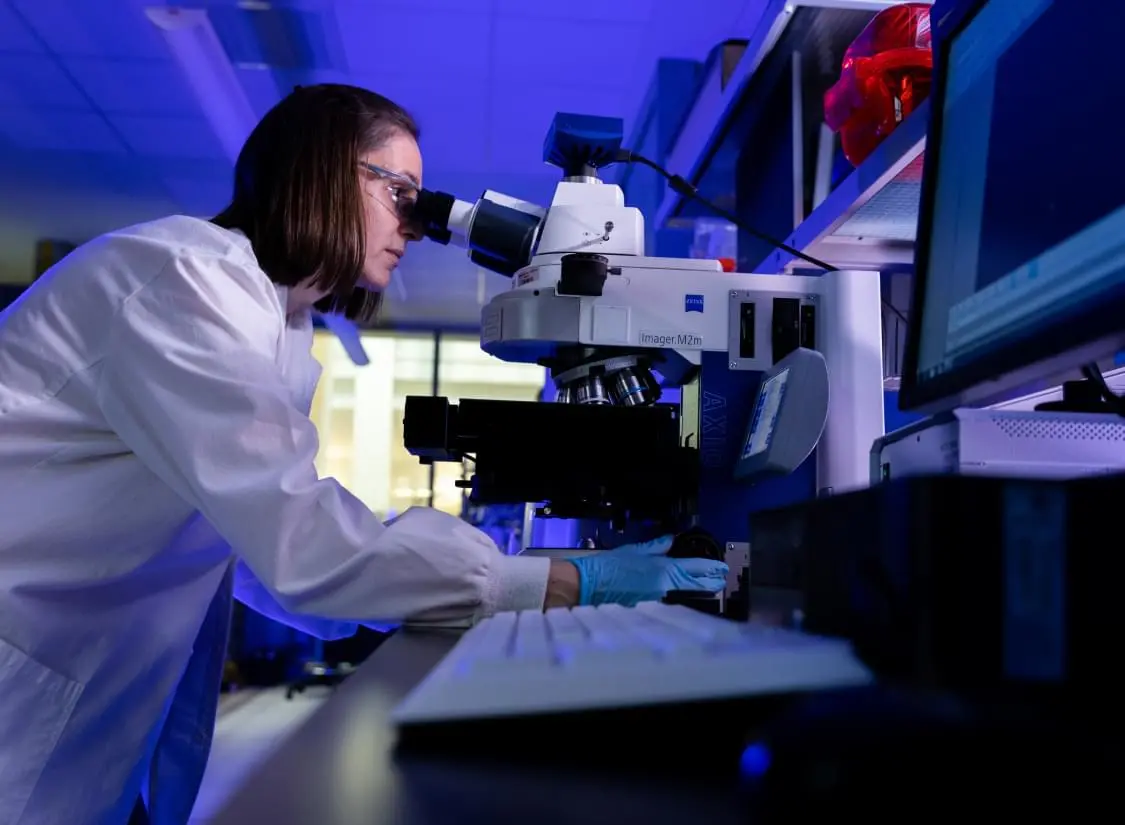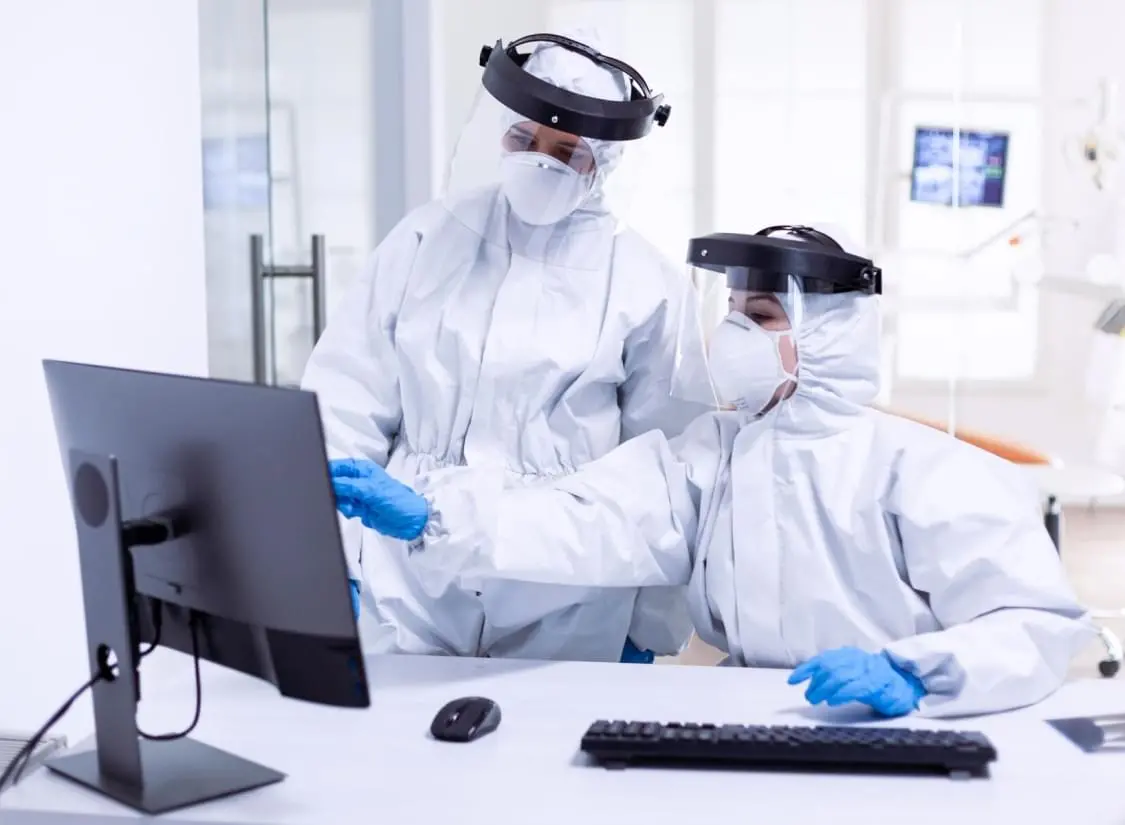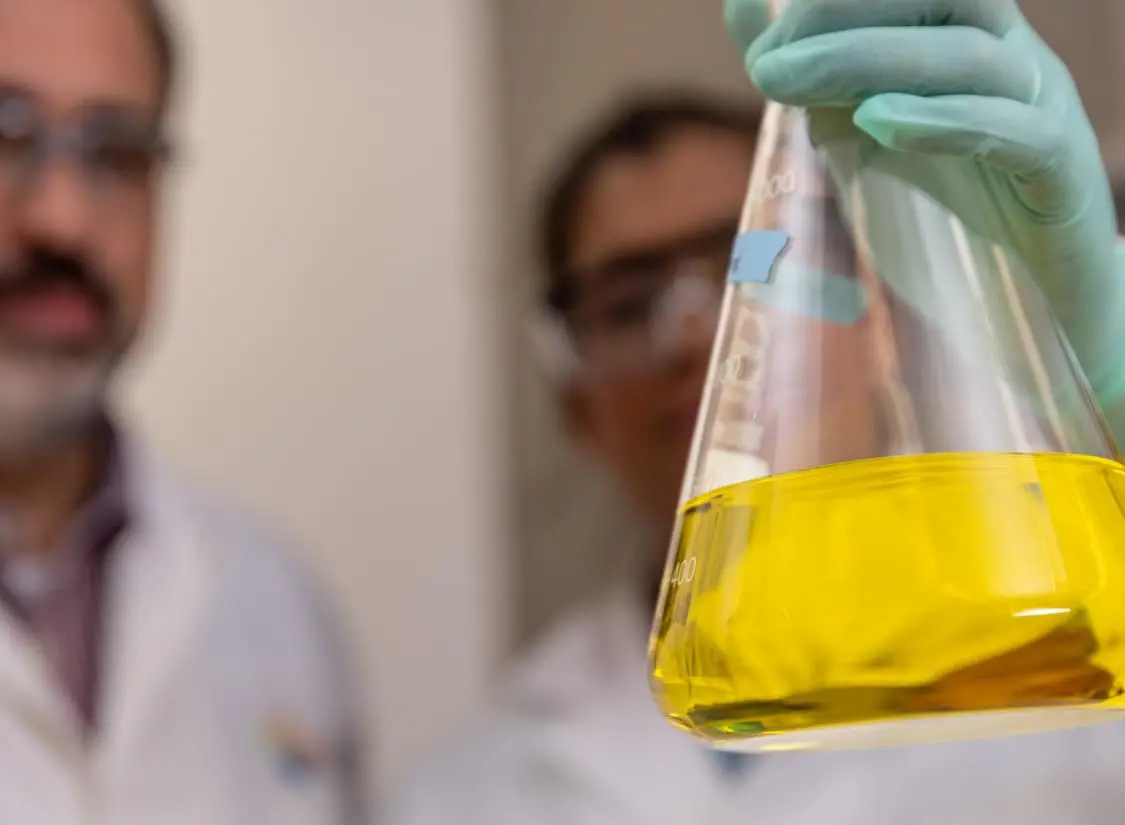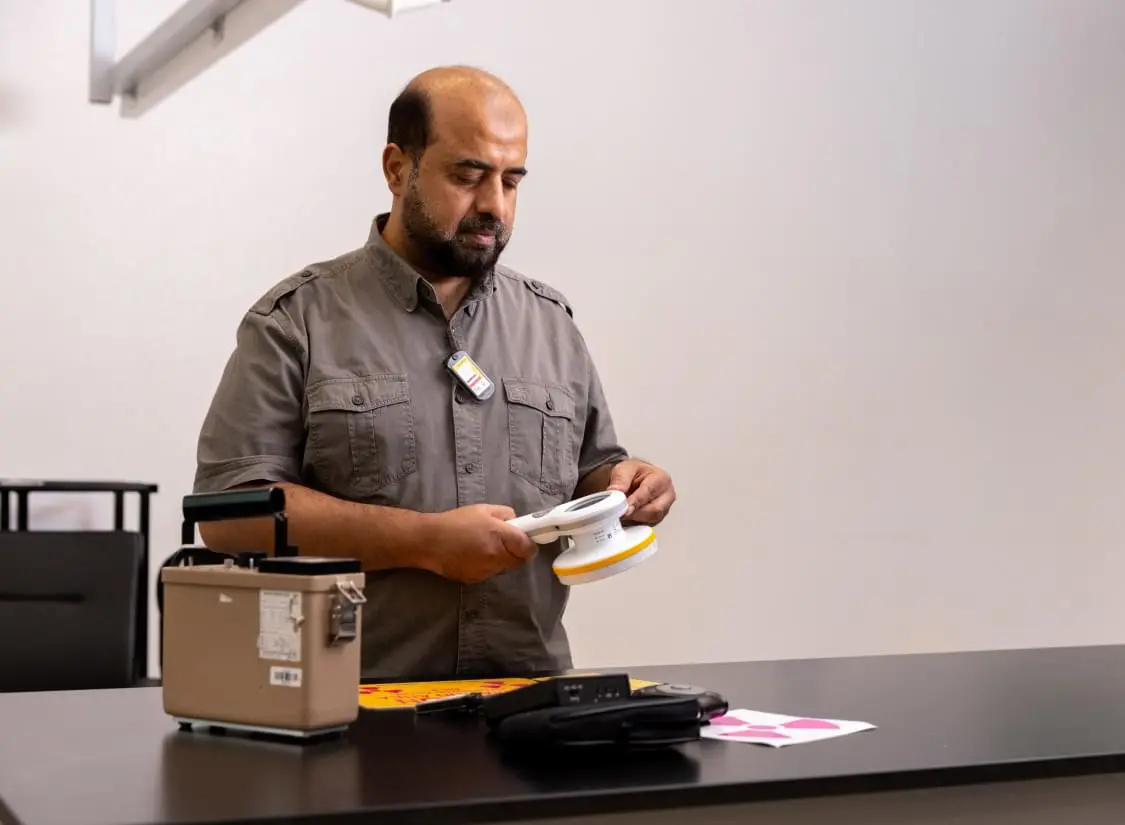




Quick Links:







The purpose of this procedure is to detail the process for laboratory decommissioning when a laboratory is vacated. This can be due to relocation of a laboratory or departure of a Principal Investigator.
Contact Chemical Warehouse to arrange for special pick-up of consumables complying with the return or reuse program eligibility, hazardous waste, and compressed gases.
Clean/decontaminate equipment that have been used with chemical / biological / radioactive materials.
Unplug all equipment that will remain in the laboratory space. If the equipment cannot be unplugged, an SOP detailing the steps required to switch off and move the equipment should be left with the equipment.
Clean any spills, stains/residues that may be present in the laboratory space (including fume hoods, refrigerators and freezers).
Ensure that all drawers, cabinets, fume hoods, refrigerators, freezers, under sink areas, etc. are left cleaned.
Remove hazard warning labels from doors, refrigerators, and other pieces of equipment.
Ensure all cabinets and storage areas remain accessible.
If the Principal Investigator/Tenant is departing KAUST, complete the Departure Clearance form sent by RST administrator and return it to hse@kaust.edu.sa before the final RST inspection.
Terminate any committee approved projects (DCB, IACUC, IBEC, IRSC), as applicable.
If students and other staff remain in the laboratory after the Principal Investigator departure, designate another KAUST faculty member who will take the responsibility of the laboratory and final decommissioning of the area. Contact RST to organize the final hazard inspection of the laboratory space.
If the Tenant has already left KAUST the responsibility of the laboratory clean-out falls upon the tenantʼs Center (if the tenant is affiliated with a Center) or Department that is ultimately responsible.
In those circumstances, the Center or Department must nominate a Departmental Designee who will supervise the laboratory decommissioning. If the tenant was not affiliated with any center, tenant affairs will have to act contractually and deduct any additional expenses for hazardous waste removal, cleanouts and material disposal.


Provide laboratory decommissioning guidance.
Perform final RST inspection of the vacated laboratory space to ensure the space is free of hazards.
Pick-up and transfer radioactive materials and radioactive waste.
Clear the departing Principal Investigator/Tenant in the HR system, if the latter is leaving KAUST.
Provide supplies for hazardous waste disposal (e.g. hazardous waste bags, cardboard boxes, sharp containers, etc.).
Collect hazardous waste, sharps disposal containers, and broken glass containers.
Transfer compressed gas cylinders.
Transfer eligible Chemical Reuse and Consumables Return Program materials.

If the Principal Investigator/Tenant is departing KAUST, another KAUST faculty member(s) has been designated to supervise and be responsible for the laboratory members who will remain at KAUST.
The Principal Investigator/Tenant or Laboratory Safety Representative (LSR) must inform RST (hse@kaust.edu.sa) at least one month before the planned laboratory closure.
The Principal Investigator/Tenant must designate laboratory members who will be responsible for decommissioning the laboratory space.
The Principal Investigator/Tenant must terminates any committee approved projects (DCB, IACUC, IBEC, IRC), as applicable.
The Principal Investigator/Tenant or Laboratory Safety Representative (LSR) can contact RST to organize an initial visit of the laboratory space to plan the decommissioning and discuss potential issues.
The designated laboratory members must dispose of all hazardous waste; clean and decontaminate all work surfaces, etc. to ensure that the laboratory is left free from hazards. Note: a physical inventory of the equipment will also be carried out by Research Asset Support team. research. assetsupport@kaust.edu.sa
The RST must carry out a final inspection before the laboratory space can be closed and/or the Principal Investigator/Tenant cleared on the HR system if this person is leaving KAUST. The inspection is intended to ensure that there are no hazards left in the laboratory space.
If some of the laboratory members will continue using the laboratory space after the Principal Investigator/Tenant departs KAUST, the laboratory will not be considered vacated and the additional conditions apply:
The Principal Investigator/Tenant must designate another KAUST faculty member(s) to supervise the laboratory members who will remain at KAUST and assume the responsibility of the final decommissioning of the laboratory space.
The Principal Investigator/Tenant must transfer all relevant approved projects (DCB, IACUC, IBEC, IRSC) to the designated KAUST faculty.
For RST, the laboratory space will be considered vacated/closed when the following conditions have been met: The laboratory space is free from hazards
If the Principal Investigator/Tenant is departing KAUST, another KAUST faculty member(s) has been designated to supervise and be responsible for the laboratory members who will remain at KAUST.

The Chemical Warehouse offers return and reuse programs for consumable and chemicals. The eligibility criteria are detailed in the sections below. Note, none of these programs apply to radioactive substances and uranyl compounds. If the laboratory has radioactive substances and/or uranyl compounds you must contact the Radiation Safety Specialist. More information can be found here: https://procurement.kaust.edu.sa/Pages/Supply-Chain.aspx
Consumables must be in original container and unopened (except for glassware, which must be clean).
Consumables must be in good condition (e.g. container, label, caps, etc.). The content must be stable and in good condition.
Complete the Return Good Authorization (RGA) Form provided by Chemical Warehouse.
Contact Chemical Warehouse to arrange for the pick-up of the boxes/containers.


Donation of consumables can be done as per following guidance:
Departing Principal Investigator/Tenant is part of, or associated with a Center – consumables can be donated to the Center. If the Center is not interested, the consumable that cannot be returned must remain in the laboratory.
Departing Principal Investigator/Tenant is not part of, or associated with a center – consumables can be donated to the Department. If the Department is not interested, the consumable that cannot be returned must remain in the laboratory.
Opened boxes of consumables cannot be returned to the Chemical Warehouse and if these cannot be donated they must be consolidated and left in the vacated laboratory space.
Compressed Gas Cylinders return to principal investigator/ienant ensures gas cylinders are disconnected from gas lines / brackets, capped prior to returning them or transporting them to the new laboratory space.
Principal investigator/ienant completes the RGCA (Return Gas Cylinder Authorization) form and coordinates with Chemical Warehouse to collect the cylinders (only unwanted/empty cylinder if the laboratory space is relocating otherwise all cylinder must be returned).
Chemical Warehouse transports cylinders from laboratory area and returns them to the appropriate vendor(s).
Chemical containers, labels, and closures must be in good condition (e.g. no exterior residues, etc.).
Contents must be stable and in good condition (e.g. look for change in color, hygroscopic chemicals must be anhydrous, etc.).
Prepared solutions that comply with above criteria and/or inherently unstable materials can be donated if the receiving laboratories want them.
Chemicals Return Program Eligibility (excluding radioactive substances and uranyl compounds)
Segregate chemicals by hazard class (i.e. flammable, toxic, oxidizer, acid, base, etc.). Contact the Research Safety Team for advice.
Prepare small containers/boxes (e.g. cardboard boxes) for each hazard class and each Program.
Label the containers/boxes with their appropriate chemical hazard class and place it outside each box.
Chemicals must be in original container and unopened.
Chemical containers, labels, and caps must be in good condition. o Contents must be stable and in good condition (e.g. look for change in color, hygroscopic chemicals must be anhydrous, etc.).
Complete the Return Good Authorization (RGA) Form provided by Chemical Warehouse.
Contact Chemical Warehouse to arrange for the pick-up of the boxes/containers. Chemical Reuse Program Eligibility (excluding radioactive substances and uranyl compounds)
Segregate chemicals by hazard class (i.e. flammable, toxic, oxidizer, acid, base, etc.). Contact the Research Safety Team for advice.
Prepare small containers/boxes (e.g. cardboard boxes) for each hazard class and each Program.
Label the containers/boxes with their appropriate chemical hazard class and place it outside each box.
Chemicals must be in original container and be at least ½ full.
Chemical containers, labels, and closures must be in good condition (e.g. no exterior residues, etc.).
No inherently unstable materials will be accepted (e.g. peroxide formers, organic peroxides, wet picric acid, etc.).
Contents must be stable and in good condition (e.g. look for change in color, hygroscopic chemicals must be anhydrous, etc.).
Add on the label that is affixed to the boxes/containers the number of containers/bottles inside each box.
Complete the Reuse Program Form provided by Chemical Warehouse.
Contact Chemical Warehouse to arrange for the pick-up of the boxes/containers.
− Departing Principal Investigator/Tenant is part of, or associated with a Center – chemicals can be donated to the Center. If the Center is not interested, the consumable that cannot be returned must remain in the laboratory.
− Departing Principal Investigator/Tenant is not part of, or associated with a Center – chemicals can be donated to the Department. If the Department is not interested, the consumable that cannot be returned must remain in the laboratory.